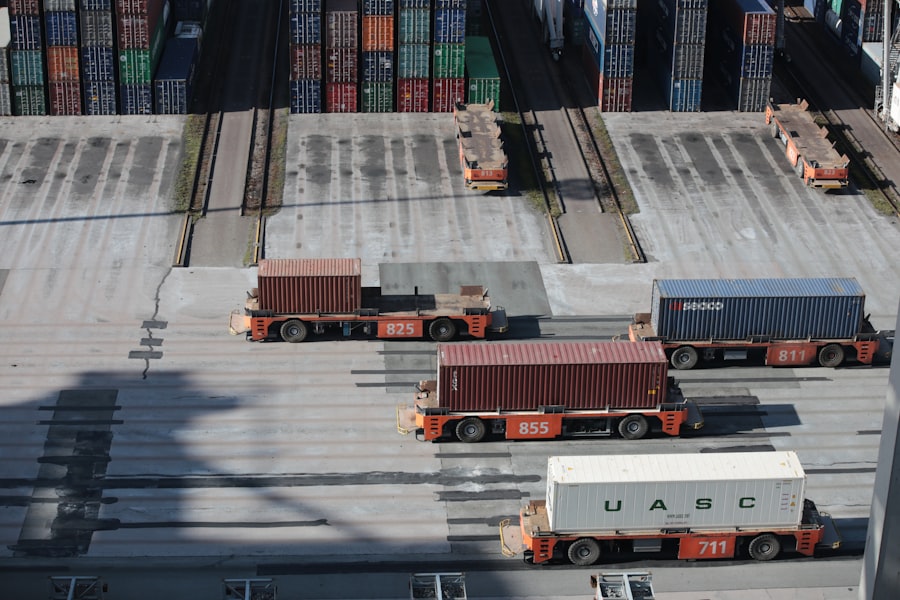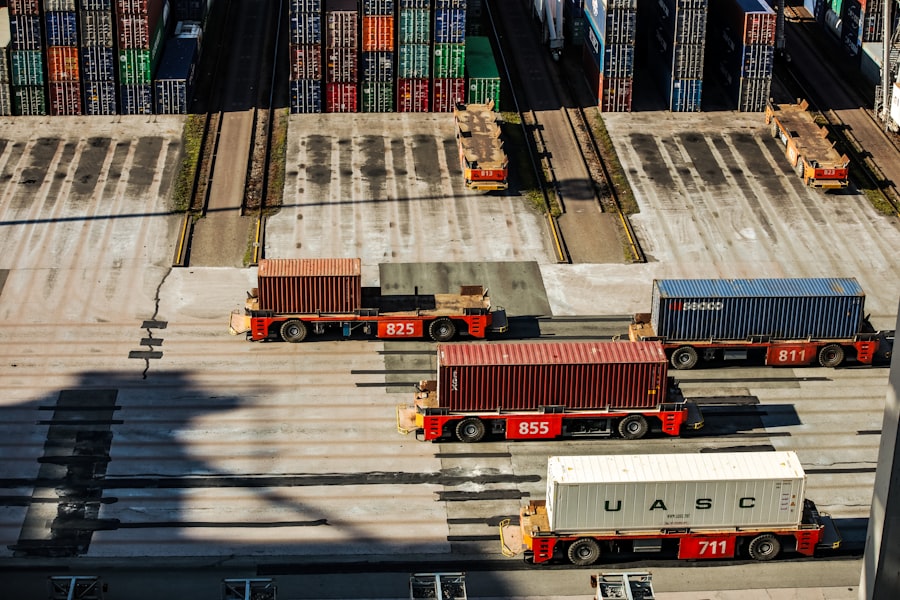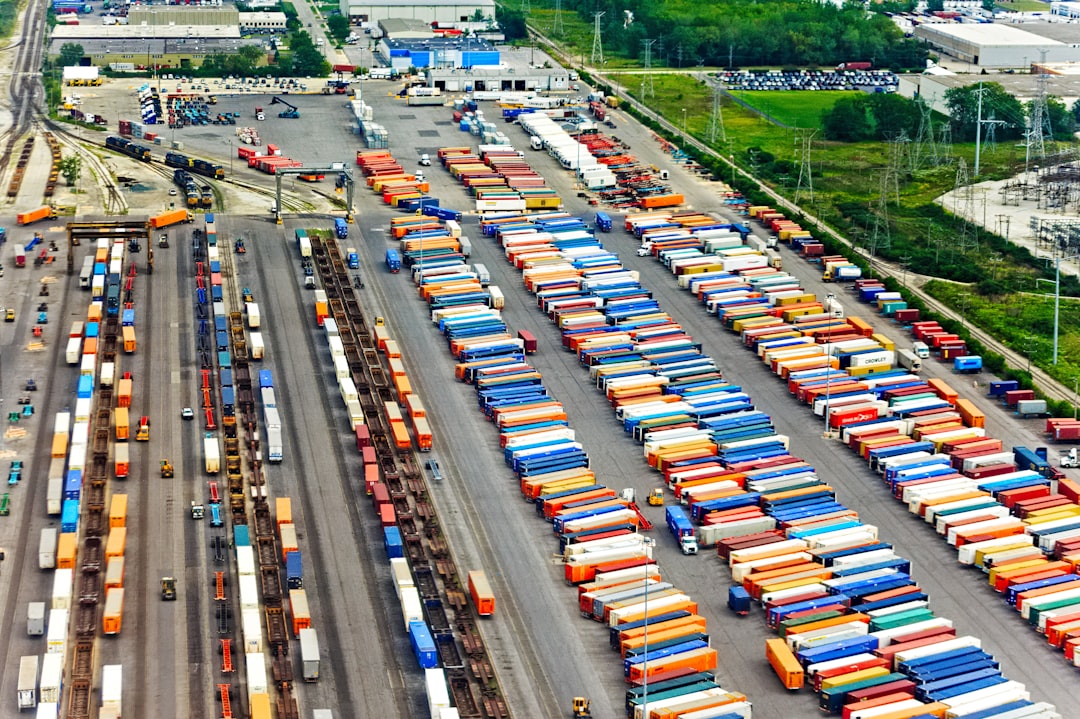Freight rate surges have become a significant concern for businesses and consumers alike, particularly in an increasingly interconnected global economy. These surges refer to sudden increases in the cost of transporting goods, which can be influenced by a myriad of factors ranging from geopolitical tensions to natural disasters. As companies strive to maintain their supply chains and meet consumer demand, understanding the dynamics behind these fluctuations is crucial.
The implications of freight rate surges extend beyond mere numbers; they can affect pricing strategies, profit margins, and ultimately, consumer behavior. In recent years, the shipping industry has witnessed unprecedented volatility in freight rates, prompting stakeholders to seek clarity on the underlying causes. The complexity of the global supply chain means that even minor disruptions can lead to significant cost increases.
As businesses navigate these challenges, they must also consider the broader economic landscape, which is often shaped by external events and internal market dynamics. This article delves into the various factors contributing to freight rate surges, providing insights into their implications for the shipping industry and the economy at large.
Key Takeaways
- Freight rates surge in response to global events, supply and demand imbalances, capacity constraints, fuel price fluctuations, trade policies, natural disasters, technological advancements, labor shortages, and more.
- Global events such as pandemics, geopolitical tensions, and economic downturns can significantly impact freight rates by disrupting supply chains and demand patterns.
- Supply and demand imbalances in the shipping industry can lead to capacity constraints, causing freight rates to surge as demand outstrips available capacity.
- Capacity constraints in the trucking and shipping industry, exacerbated by driver shortages and infrastructure limitations, contribute to freight rate surges.
- Fluctuations in fuel prices directly affect freight rates, as fuel is a significant cost component in transportation, leading to rate surges when fuel prices rise.
Impact of Global Events on Freight Rates
Global events play a pivotal role in shaping freight rates, often leading to abrupt changes that can ripple through the supply chain. For instance, geopolitical tensions such as trade wars or military conflicts can disrupt established trade routes and create uncertainty in the market. When countries impose sanctions or tariffs, the cost of transporting goods can skyrocket as companies scramble to find alternative routes or suppliers.
Such disruptions not only increase freight costs but also lead to delays in delivery times, further complicating logistics for businesses. Moreover, global health crises, such as the COVID-19 pandemic, have demonstrated how quickly freight rates can be affected by unforeseen circumstances. The pandemic led to widespread lockdowns and restrictions that severely impacted shipping operations worldwide.
As demand for certain goods surged while others plummeted, shipping companies faced a unique set of challenges that resulted in fluctuating freight rates. The pandemic underscored the vulnerability of global supply chains and highlighted the need for businesses to remain agile in response to external shocks.
Supply and Demand Imbalance in the Shipping Industry

The fundamental economic principle of supply and demand is a driving force behind freight rate fluctuations. When demand for shipping services outstrips available capacity, rates tend to rise sharply. This imbalance can occur due to various factors, including seasonal trends, economic growth, or sudden spikes in consumer demand.
For example, during peak shopping seasons such as holidays, retailers often increase their orders to meet consumer expectations, leading to heightened demand for shipping services. Conversely, when there is an oversupply of shipping capacity—such as during economic downturns—freight rates may decrease as companies compete for limited cargo. However, this scenario is not always straightforward; even during periods of low demand, certain constraints such as port congestion or labor shortages can prevent shipping companies from effectively reducing their rates.
Thus, understanding the nuances of supply and demand within the shipping industry is essential for stakeholders aiming to navigate freight rate surges effectively.
Capacity Constraints in the Trucking and Shipping Industry
| Capacity Constraints | Trucking Industry | Shipping Industry |
|---|---|---|
| Driver Shortage | Yes | No |
| Equipment Shortage | Yes | No |
| High Demand | Yes | Yes |
| Regulatory Constraints | Yes | No |
Capacity constraints are a significant factor contributing to freight rate surges in both trucking and shipping sectors. These constraints can arise from various sources, including limited availability of vessels or trucks, port congestion, and regulatory restrictions. For instance, when ports become congested due to increased cargo volumes or labor shortages, it can lead to delays in unloading and transporting goods.
Such bottlenecks not only increase operational costs but also drive up freight rates as companies seek to expedite their shipments. Additionally, the trucking industry faces its own set of capacity challenges. A shortage of qualified drivers has been a persistent issue, exacerbated by factors such as an aging workforce and increased regulatory requirements.
When there are not enough drivers to meet demand, trucking companies may raise their rates to attract available drivers or compensate for increased operational costs. This interplay between capacity constraints and freight rates highlights the importance of addressing workforce issues and infrastructure limitations within the industry.
Fuel Price Fluctuations and Their Effect on Freight Rates
Fuel prices are another critical factor influencing freight rates across the shipping and trucking industries. As fuel costs rise or fall, they directly impact operational expenses for transportation companies. When fuel prices increase significantly, carriers often pass these costs onto shippers in the form of higher freight rates.
This relationship between fuel prices and freight rates underscores the sensitivity of the shipping industry to fluctuations in global oil markets. Moreover, fuel price volatility can create uncertainty for businesses planning their logistics budgets. Companies may find it challenging to predict transportation costs accurately when fuel prices are subject to rapid changes due to geopolitical tensions or natural disasters affecting oil production.
As a result, businesses must develop strategies to mitigate the impact of fuel price fluctuations on their overall logistics expenses.
Impact of Trade Policies and Tariffs on Freight Rates

Trade policies and tariffs have a profound effect on freight rates by altering the flow of goods between countries. When governments impose tariffs on imported goods, it can lead to increased costs for businesses that rely on international supply chains. These additional costs often translate into higher freight rates as companies seek to maintain their profit margins amidst changing trade dynamics.
Furthermore, trade agreements or disputes can create uncertainty in the market, prompting businesses to adjust their logistics strategies accordingly. For instance, during trade negotiations between major economies, companies may preemptively increase their inventory levels or seek alternative suppliers to mitigate potential disruptions. Such proactive measures can lead to increased demand for shipping services, further driving up freight rates during periods of uncertainty.
Effects of Natural Disasters and Weather Events on Freight Rates
Natural disasters and adverse weather events can have immediate and far-reaching consequences for freight rates. Hurricanes, floods, and other extreme weather conditions can disrupt transportation networks, damage infrastructure, and delay shipments. When such events occur, shipping companies may face increased operational costs due to rerouting or delays in delivery times.
Additionally, natural disasters can lead to temporary shortages of goods in affected areas, driving up demand for available shipping capacity. As businesses scramble to replenish their inventories or deliver essential supplies, freight rates may surge in response to heightened demand amidst constrained capacity. The unpredictability of weather-related disruptions underscores the need for businesses to develop contingency plans that account for potential impacts on their logistics operations.
Technological Advancements and Their Influence on Freight Rates
Technological advancements have transformed the shipping industry in recent years, influencing freight rates in various ways. Innovations such as automation, data analytics, and real-time tracking systems have improved operational efficiency and transparency within supply chains. By leveraging technology, companies can optimize their logistics processes, reduce costs, and enhance customer service.
However, while technology can lead to cost savings in some areas, it may also require significant upfront investments that could impact short-term profitability. For instance, implementing advanced tracking systems may necessitate additional expenditures on software and training for employees. As businesses weigh these costs against potential long-term benefits, they must consider how technological advancements will shape their approach to managing freight rates in an evolving market landscape.
Labor Shortages and Their Impact on Freight Rates
Labor shortages have emerged as a critical challenge within the shipping industry, affecting both trucking and maritime sectors. A lack of qualified workers can lead to operational inefficiencies and increased costs for transportation companies.
Moreover, labor shortages can exacerbate existing capacity constraints within the industry.
This situation not only impacts freight rates but also creates challenges for businesses trying to maintain timely deliveries amidst a competitive market environment.
Strategies for Managing and Mitigating Freight Rate Surges
To navigate the complexities of freight rate surges effectively, businesses must adopt proactive strategies that address both short-term challenges and long-term trends. One approach involves diversifying suppliers and transportation options to reduce reliance on any single source or route. By establishing relationships with multiple carriers or exploring alternative shipping methods—such as rail or air freight—companies can enhance their flexibility in responding to fluctuations in freight rates.
Additionally, investing in technology solutions that provide real-time visibility into supply chain operations can help businesses make informed decisions regarding logistics planning. By leveraging data analytics and predictive modeling tools, companies can better anticipate changes in demand or potential disruptions that may impact freight rates. Such insights enable organizations to optimize their logistics strategies and mitigate risks associated with sudden cost increases.
Future Outlook for Freight Rates and the Shipping Industry
The future outlook for freight rates and the shipping industry remains uncertain as various factors continue to shape market dynamics. While technological advancements hold promise for improving efficiency and reducing costs over time, external events such as geopolitical tensions or climate change may introduce new challenges that could impact freight rates unpredictably. As businesses adapt to an evolving landscape characterized by rapid change and uncertainty, they must remain vigilant in monitoring trends that influence freight rates.
By fostering resilience within their supply chains and embracing innovative solutions, organizations can position themselves for success amidst ongoing fluctuations in transportation costs. Ultimately, understanding the multifaceted nature of freight rate surges will be essential for stakeholders seeking to navigate the complexities of the global shipping industry effectively.
In recent times, the global shipping industry has been grappling with unprecedented freight rate surges, impacting businesses worldwide. These surges have been attributed to a combination of factors, including supply chain disruptions and increased demand for goods. For a deeper understanding of the current challenges faced by the shipping industry, you can explore a related article on this topic by visiting MyGeoQuest. This article provides insights into the underlying causes of the freight rate increases and discusses potential strategies for mitigating their impact on global trade.
WATCH NOW! Unlocking Disaster: 7 Choke Points That Could Fracture Our Connected World Overnight
FAQs
What is a freight rate surge?
A freight rate surge refers to a sudden and significant increase in the cost of shipping goods from one location to another. This increase can be caused by various factors such as high demand, limited capacity, fuel price fluctuations, or other market conditions.
What causes freight rate surges?
Freight rate surges can be caused by a variety of factors including increased demand for shipping services, limited capacity due to seasonal fluctuations, fuel price increases, natural disasters, geopolitical events, or other market conditions that impact the supply and demand for shipping services.
How do freight rate surges impact businesses?
Freight rate surges can have a significant impact on businesses, leading to increased transportation costs, higher production costs, and potential delays in supply chains. This can ultimately affect a company’s bottom line and profitability.
How can businesses mitigate the impact of freight rate surges?
Businesses can mitigate the impact of freight rate surges by negotiating long-term contracts with carriers, optimizing their supply chain and logistics operations, diversifying their transportation options, and staying informed about market conditions and trends in the shipping industry.
Are there any regulations or policies that address freight rate surges?
There are no specific regulations or policies that directly address freight rate surges. However, government agencies and industry organizations may monitor and report on market conditions in the shipping industry, and may take action to address any anti-competitive behavior or price gouging by carriers during periods of rate surges.
